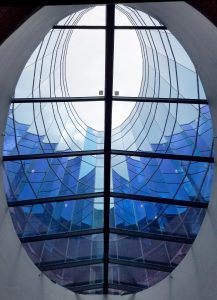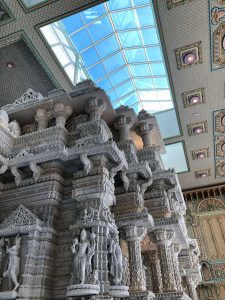Daylighting is no longer about instinct—it’s about proof.
For architects and owners, questions come early and often:
- “Will it meet sDA requirements?”
- “What’s the ASE score with this layout?”
- “Can I prove I’ll hit LEED daylight credits?”
When a design moves forward, no one wants surprises. That’s why predictive modeling is transforming the way skylights and glazed roof systems are specified.
The Metrics that Matter
Today’s most widely used daylighting performance benchmarks include:
- SDA (Spatial Daylight Autonomy): Percent of occupied spaces meeting a target lux level through daylight.
- ASE (Annual Sunlight Exposure): Helps prevent glare and overheating by tracking direct sun penetration.
- DGP (Daylight Glare Probability): Quantifies visual comfort for occupants.
These aren’t just acronyms—they’re the foundation of LEED v4 and WELL daylighting credits, shaping how projects are reviewed, approved, and certified.
The Crystal Structures Approach
At Crystal Structures Glazing, we’ve built our reputation on helping architects answer these questions with confidence.
- Design Assistance Center (Launching Fall 2025): A first-of-its-kind hub for live modeling, spec reviews, and mock-ups tailored to real project conditions.
- Simulation-Ready Products: Our skylight and glazing systems are delivered with data sets optimized for ClimateStudio, Radiance, and Revit.
- Integrated Coordination: By uniting the design team, engineers, and product specialists, iterations move faster—and outcomes are more predictable.
Case Studies: Data in Action
1. Office Retrofit – Daylight That Pays Back
A regional office building using polycarbonate vaults achieved LEED v4 daylight credit—without relying on internal shading devices. Daylight models showed sDA compliance at 75%, and actual post-occupancy monitoring confirmed a 40% reduction in annual lighting energy use.
2. Educational Wing – Healthier Classrooms
In a recent school addition, daylighting simulations predicted a 60% reduction in glare complaints with diffused glazing. Post-installation surveys validated the model, with students reporting improved comfort and teachers noting fewer distractions. The project’s ASE scores confirmed compliance, supporting the district’s LEED Silver certification.
3. Corporate Atrium – Performance Meets Design
For a corporate HQ atrium, pre-installation DGP modeling revealed potential glare issues during winter afternoons. Adjustments to skylight geometry and glazing spec solved the problem before construction. The final design exceeded LEED daylighting thresholds while maintaining the clean architectural vision.
Why Modeling Matters
Predictive daylighting analysis gives architects:
- Design Confidence – No second guessing if a project will qualify for LEED or WELL daylight credits.
- Cost Control – Models catch performance issues early, reducing redesigns and post-installation fixes.
- Owner Value – Proven reductions in lighting energy costs and improved occupant well-being strengthen the case for investment.
Daylighting is too important to leave to chance.
- Receive Editable Specs: Contactus@csglazing.net
- Schedule a CEU Class for Your Firm: jsucher@csglazing.net
- Explore Our Project Gallery for Design Inspiration: https://crystalstructuresglazing.com/portfolio/
- Get Early Access to the Fall 2025 Design Assistance Center: jsucher@csglazing.net
- Follow us on LinkedIn: https://www.linkedin.com/company/crystal-structures-glazing/
Let Crystal Structures help you bring your vision to light—without compromise.
———————-
National Reputation As the Go-To Team
Crystal Structures is frequently chosen as the contractor-preferred sub for high-reputational risk projects with highly-custom / complex / “gotta be right” / “how do we actually do this” visionary concepts.
Your glazed structure design-to-completion team.



